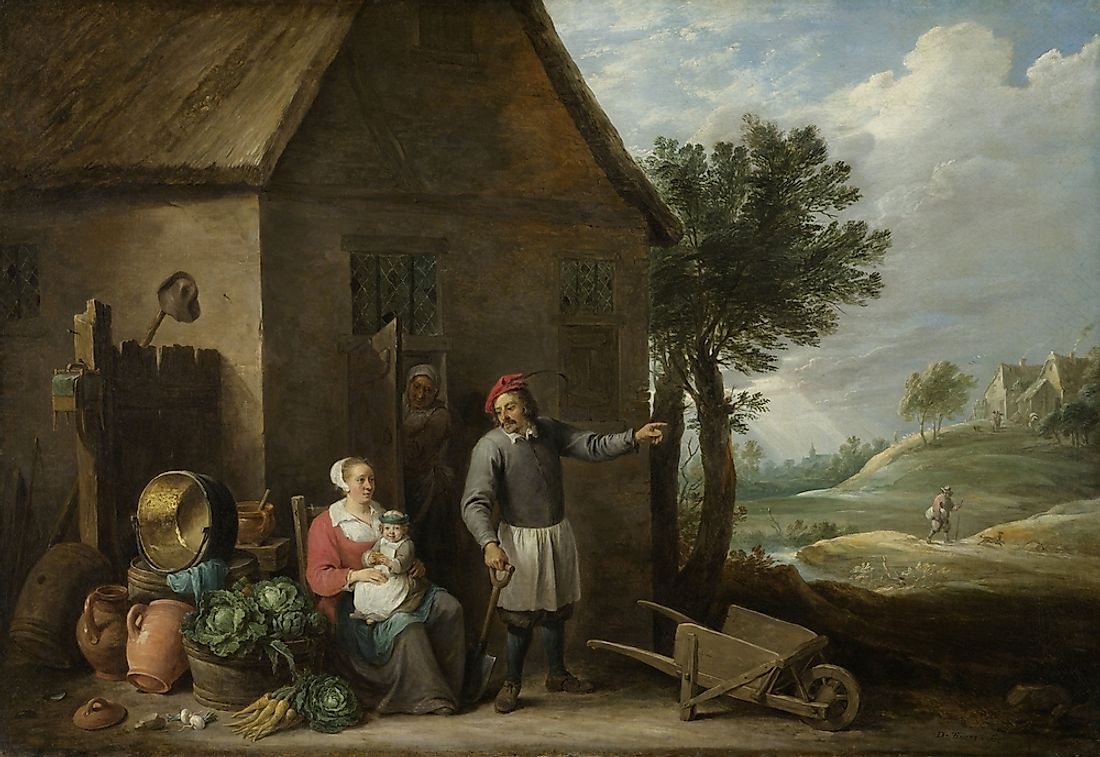What is Serfdom?

Serfdom is a condition of bondage that existed in the High Middle Ages in Europe. It lasted up to the mid-19th century. It took place within the context of the feudalism system. Peasants (also called serfs) were not allowed to leave their land without the permission of their landlords. They belonged to the lowest social class of the feudal society. Slaves and serfs were slightly different. Slaves were human beings who were bought and sold as property. They were not considered humans and as such had no rights. However, serfs were legally people having limited rights in comparison to free peasants.
Duties of the Serfs
The serfs would work for their lord for 5-6 days per week. They used the rest of the time to work on their land. Some of their responsibilities to their lords included digging ditches, plow the fields, repair fences, and harvest the crops. The other duty of the serfs was paying taxes and fees to the landlord. The tax calculation depended upon the amount of the land owned by the serf. The standard taxes would be a third of the land. Furthermore, the serfs had an obligation to pay fees whenever they married, had a baby, or during a war. The payment was in the form of food items rather than money. Money was a rare commodity then. Whatever the payment was, it had to undergo a test to determine whether it was good enough. For instance, if the serf gave a chicken as payment, the chicken had to be able to jump over a fence.
Advantages of Serfdom
The major advantage that the serfs had compared to other forms of bondage is that they had some freedom. Firstly, they could own property and money. In fact, some serfs made more money than their neighbors who were free. They were subsistence farmers who grew food on their land. Serfs could even buy their freedom. However, for as long as they lived on their lord’s land, the lords had the responsibility of protecting them from criminals. During the famine, the lords gave charity to the serfs.
The Origin of Serfdom
Before the 10th century, serfdom existed in the ancient world. In ancient Greek, the “helots” of the city-state of Sparta played the same role as the serfs. Similarly, during the reign of the Roman Empire, in the 3rd century, there was a shortage of labor. As a result, Roman freemen volunteered to work on the lands of large farm owners as tenant farmers. These workers became known as the “coloni.” Afterwards, there was an empire that ruled Europe for over 200 years known as the Carolingian Empire. When the empire collapsed in the 10th century, it left a huge gap. There was no strong empire to rule Europe at the time. To fill this gap, a crop of powerful feudal lords arose. They established serfdom as a source of agricultural labor for their large farms. Hence, this was the context in which serfdom came into existence.
The End of Serfdom
In Western Europe, serfdom declined during the Middle Ages. The Black Death greatly reduced the rural population and strengthened the bargaining powers of the workers. In England on the other hand, serfdom’s end began with the 1381 Peasants’ Revolt. It ended fully in 1574 with the freeing of all the remaining serfs by Elizabeth I. In France, the end of serfdom was de facto as pronounced by Philip IV, Louis X, and Philip V. By the 15th century most serfdom scenarios excluding a few cases had ceased. In other parts of Europe such as Castile, northern France, Sweden, Germany, and Portugal among others, serfdom had to stop due to the revolts staged by the peasants.











